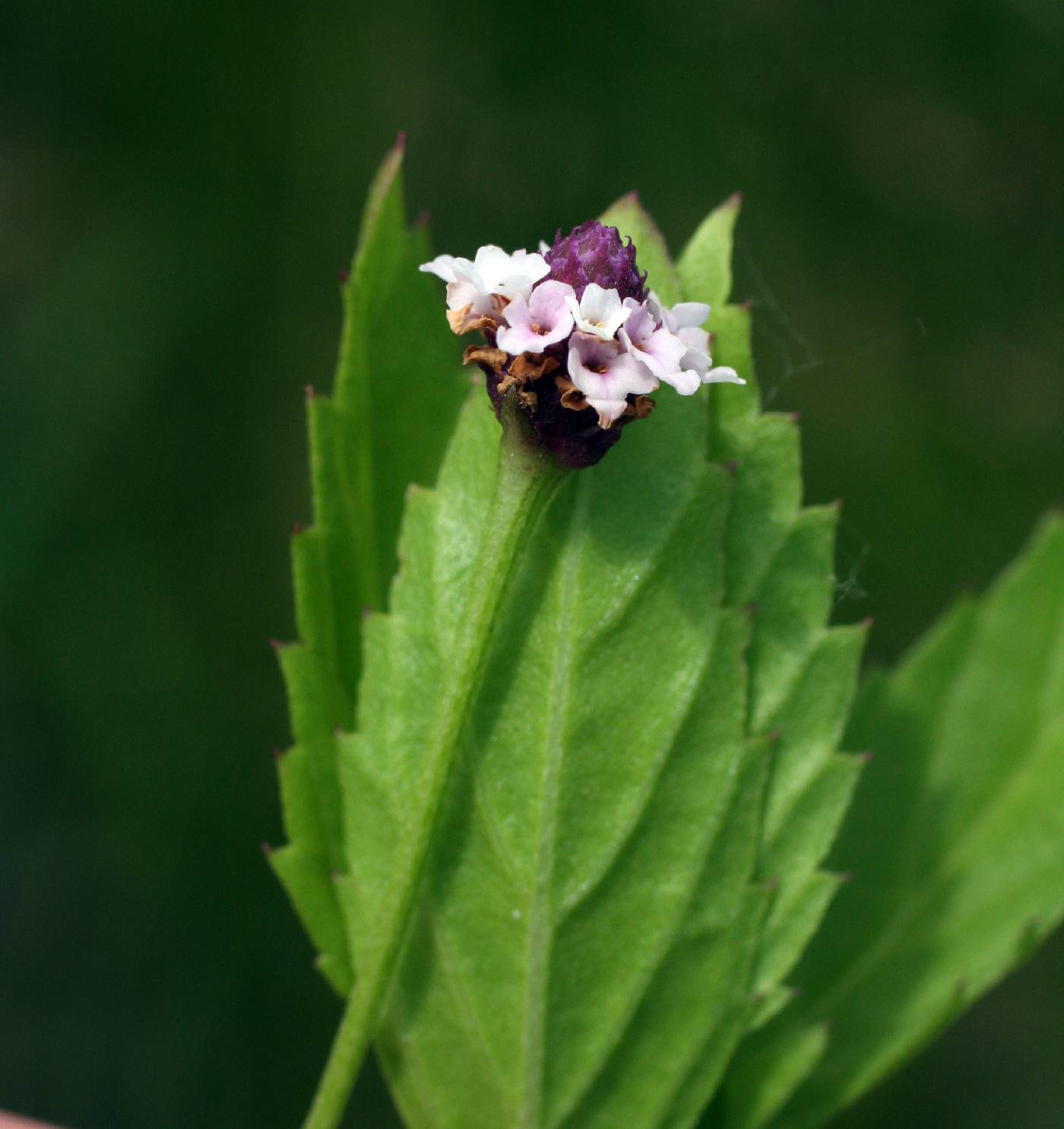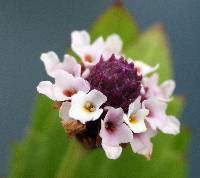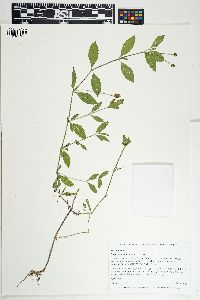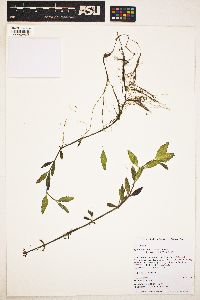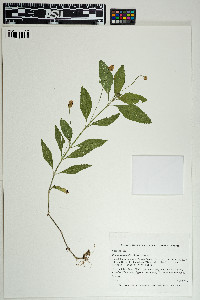Perennial herb to 0.6 m tall
Stem: trailing, with ascending or erect flower stems arising from rooting vegetative stems.
Leaves: opposite, short-stalked, 2 - 6 cm long, 0.8 - 1.5 cm wide, lance-shaped to egg-shaped, tapering at both ends, with five to eleven teeth per side.
Flowers: borne in a head-like axillary spike, with broad egg-shaped pointed bracts equal to or longer than the small membranous calyx and stamens shorter than or slightly longer than the corolla tube. The corolla is white to bluish or pink, often with a yellow eye, has a very slender tube that is slightly longer than the calyx (about 2 mm long), and four unequal spreading lobes appearing somewhat two-lipped.
Fruit: two nutlets surrounded by or joined to the calyx.
Similar species: Phyla species have axillary inflorescences, four-lobed corollas and fruit separating into two nutlets. Phyla cuneifolia differs by having narrow inversely egg-shaped leaves with broadly rounded leaf tips and one to three teeth per side.
Flowering: mid June to late September
Habitat and ecology: Common in muddy, fluctuating stream and pond borders with limited competition, and occasional on mudflats or in wet soil.
Occurence in the Chicago region: native
Etymology: Phyla means tribe. Lanceolata means lance-shaped.
Author: The Morton Arboretum

